Tri-Tone Duality of Music
As seen in the Basics of the Music System article, there is a primary relationship in music (and therefore all sonic phenomena) called the tri-tone, wherein two notes are opposite each other within the 12-tone music scale. There are six pairs of these tri-tone notes altogether.
Using again the 12-around-1 matrix as our mapping tool, we’re going to see how music is based upon this tri-tone relationship at a very fundamental level.
Seven Basic Triads
The familiar music scale — do, re, mi, fa, so, la, ti, do — is a seven-tone scale, with the eighth “do” completing one octave (and starting the next higher one). In the key of A, these notes are A B C# D E F# G# A. Each of these notes is the basis for a set of 3-note chords, or triads, that comprise the seven basic chords in a given key. There are three major triads (having a major third), three minor triads (having a minor third), and one diminished triad (having both a minor third and minor fifth).
In the key of A, these triads are:
A Major 1 B minor 2 C# minor 3 D Major 4 E Major 5 F# minor 6 G# diminished 7
These are also referred to numerically as the 1 chord (A Maj), 2 chord (B min), 3 chord (C# min), 4 chord (D Maj), etc, since the same pattern exists in all 12 keys and is therefore easier to speak about generically as numeric positions within the 7-tone scale.
Using our color-coding spectrum, we can map out the seven triads onto our circle of fifths matrix with one colored triangle per chord. (Roll over image, then click right arrow to advance through slides, or click on icons at the bottom.)
Note the perfect symmetry of all seven chords together. This shows the innate wholeness and balance present within each key of music.
Also note that in the above image only one half of the matrix is filled in with chords. The lower half is completely empty, with five notes remaining unused. These notes are not in the key of A. They are, however in the key of D# (also known as Eb). This is the exact opposite key from A — the tri-tone key, so to speak. Eb shares two of its seven notes with A, though... the D and G# (G# is called Ab when in the key of Eb, but it's the same note). These two notes are themselves tri-tones, as evidenced by being opposite each other in the matrix. In the key of A they are the 4th and 7th notes respectively. In the key of Eb they are swapped in their positions, being the 7th and 4th notes respectively.
Adding in the triads for Eb, we get this beautiful, balanced pattern showing how it takes two opposite keys to create the whole system of music.
Tying this into the primary components of cosmometry, it becomes apparent that in essence music is a double toroidal system at its most fundamental level.


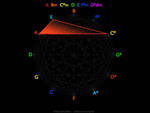

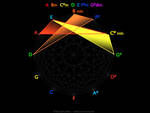
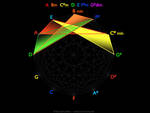
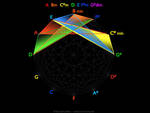
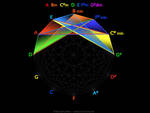
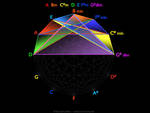

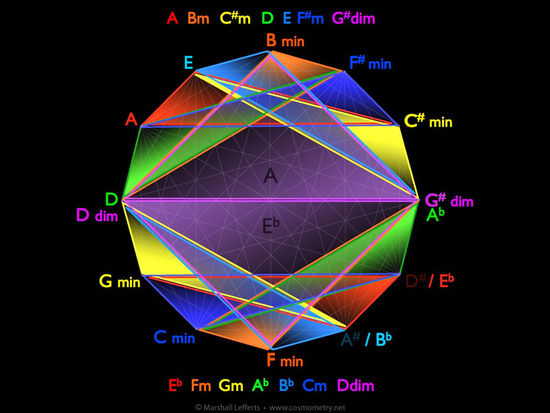
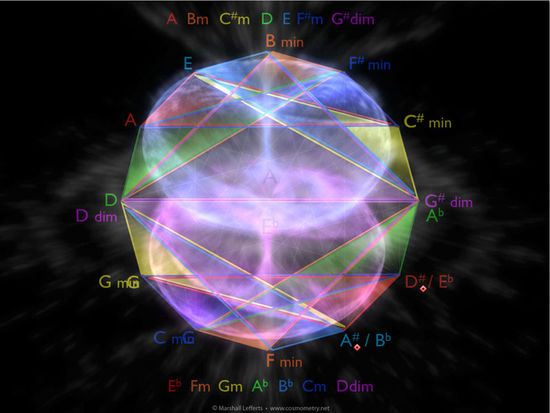
Comments
(please read the commenting policy before joining the conversation)